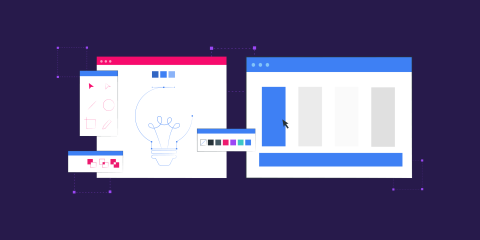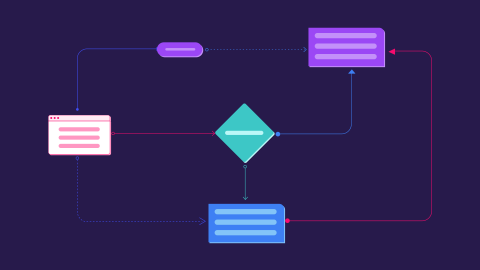Config 2025 Recap: Tools That Will Change How We Work

From Design to Delivery: How Figma’s New Tools Are Changing the Game for Digital Teams
This year’s Config conference signaled a significant leap forward for the Figma ecosystem and the design and development teams that rely on it daily. Figma’s launch of four new products and key enhancements to existing tools showcases a clear shift: it’s no longer just a UI design platform. It’s evolving into an end-to-end environment for collaboration, prototyping, content creation, and even simple site publishing.
Figma has become central to how we work at Insomniac Design, not just for our design team, but across strategy, research, content, and engineering. These new capabilities help us streamline delivery, bring clients into the process earlier, and unlock new ways to collaborate in real time.
Here’s our take on what’s new and why it matters for the future of digital product delivery.
Figma Sites: From Design File to Live Page
Figma Sites introduces a new way to transform a design into a lightweight, fully responsive website. Starting with a standard Figma design file, teams can now create pages that support breakpoints, layout variants, and animations with minimal lift. Even more exciting, future integrations with CMS platforms and code frameworks like React and Tailwind are already in motion.
What it means for our clients:
This opens the door for faster, more collaborative ways to present and test design concepts. Instead of sending static mockups, we can share live previews that look and behave like actual products. It’s a particularly strong fit for quick-turn landing pages, workshop deliverables, or MVPs that need stakeholder buy-in. And because it connects to our design systems, we can build fast without sacrificing consistency.
Figma Make: AI-Driven Prototyping Gets Real
The acquisition of Diagram in 2023 hinted at Figma’s investment in AI, and Figma Make is the result. This tool uses large language models to turn existing designs into interactive prototypes, bridging the gap between wireframes and testable user journeys.
What it means for our clients:
Complex ideas (like dashboards, multi-step workflows, or data visualizations) are easier to communicate when stakeholders can interact with them. Figma Make helps us show, not just tell, what we’re thinking. It also makes it easier to align with developers, giving them more precise context before a single line of code is written.
Figma Buzz: Making Design More Accessible to Everyone
Figma Buzz brings lightweight, template-driven design tools to non-designers. Think: marketing teams producing social graphics, content teams updating banner ads, or project managers adjusting workshop slides. Designers can lock down what matters and open up everything else.
What it means for our clients:
We’ve long believed in empowering cross-functional teams, and this tool gets us closer. Buzz is great for production work and everyday needs that don’t require a full creative brief. Combine it with Figma’s new “Content Seat” (a pricing tier for non-design collaborators), and suddenly, more voices can contribute directly to the creative process, without breaking design integrity or process.
Figma Draw: Visual Thinking, Simplified
Designers are no strangers to vector tools, but Figma’s new native drawing capabilities allow for quick sketching, shaping, and ideation, all within the same ecosystem. It’s not a replacement for Illustrator, but eliminates the need to jump between platforms.
What it means for our clients:
Better, faster collaboration. For distributed teams, the ability to co-sketch in Figma makes whiteboard sessions and creative brainstorms feel more natural, whether working from five time zones or the same office.
Other Notable Enhancements
Figma also introduced support for grid-based auto layout, a long-requested feature that makes designing complex UI structures like calendars, tables, and dashboards much more efficient. For us, this means spending less time wrestling with layout quirks and more time refining the user experience.
Why This Matters for Digital Teams
Figma’s updates reflect a more significant shift in the digital design world: teams don’t want silos. They want fluidity between strategy, content, design, and development. They want tools that work the way they work, not the other way around.
At Insomniac Design, we’re always looking for ways to work smarter, collaborate better, and deliver more meaningful experiences for our clients. These new Figma tools are helping us do all three—faster, together, and with fewer handoffs.
Final Thoughts
Figma isn’t just innovating for designers; it’s building a more integrated future for digital teams. With new products like Figma Sites, Make, Buzz, and Draw, moving from idea to impact is easier than ever.
As design becomes more collaborative, strategic, and embedded in organizations' operations, we’re excited to keep leading the charge, using tools like these to help clients work better, build smarter, and launch faster.



